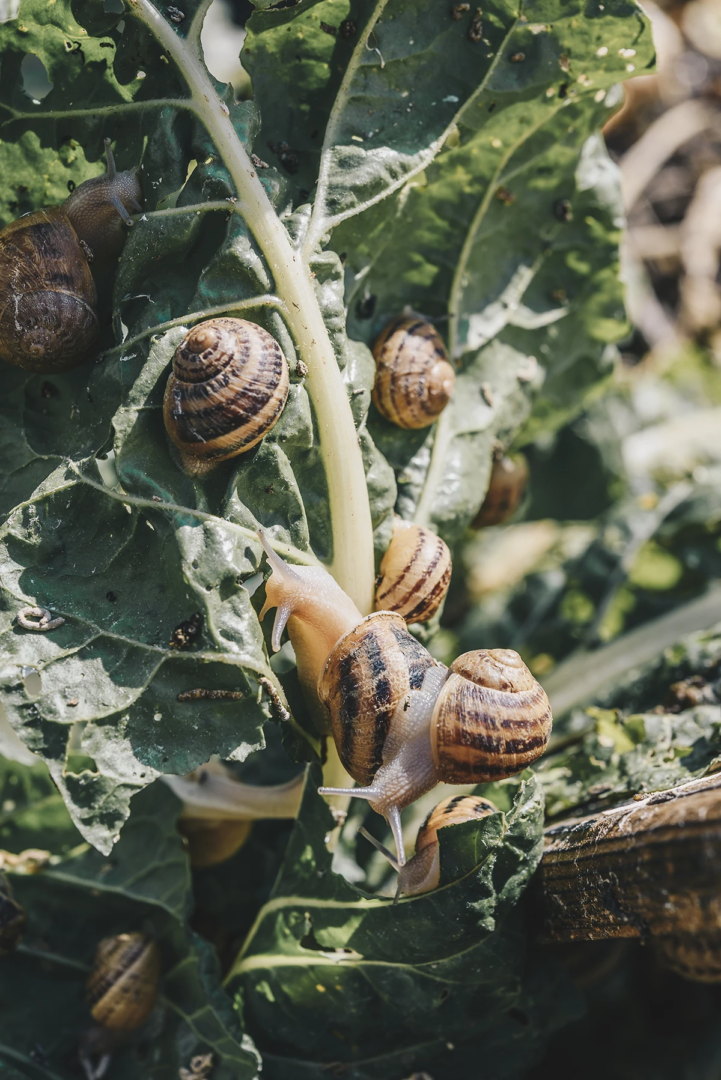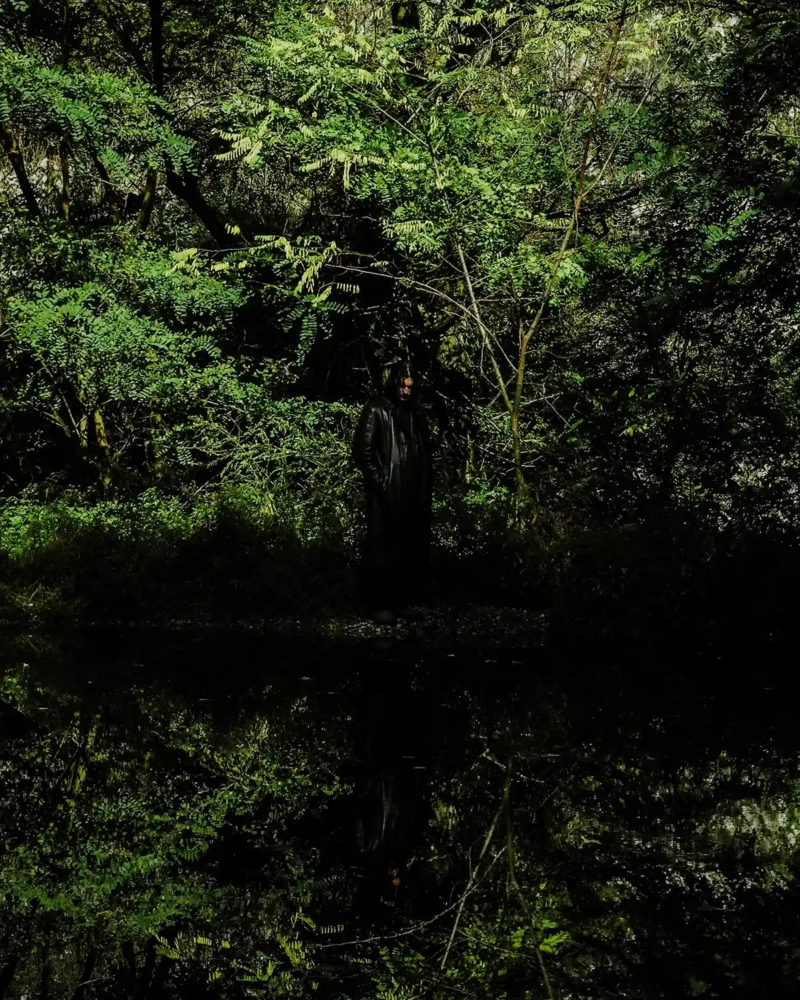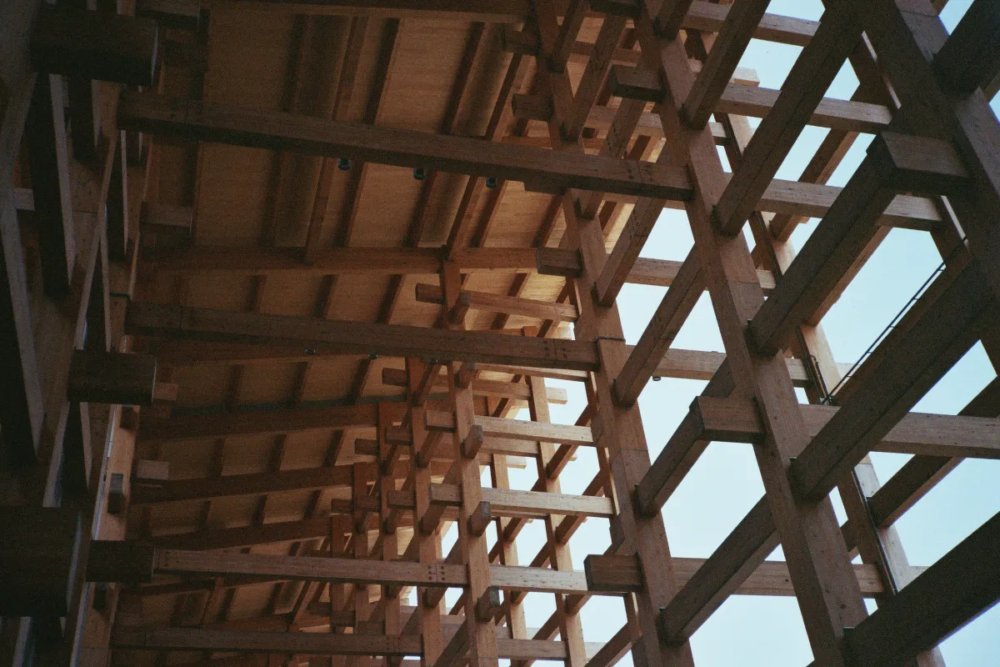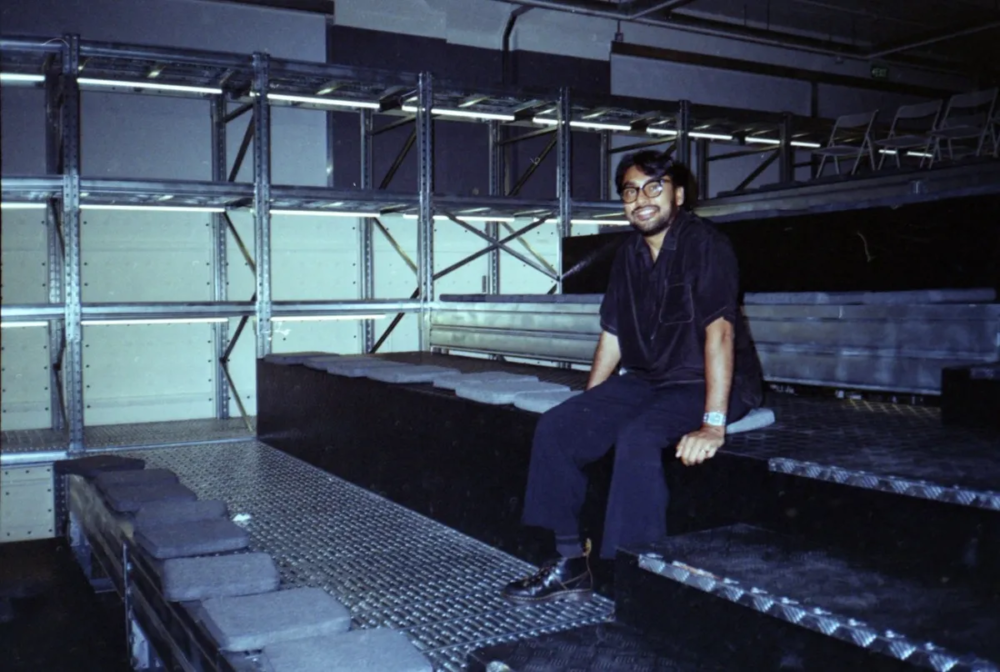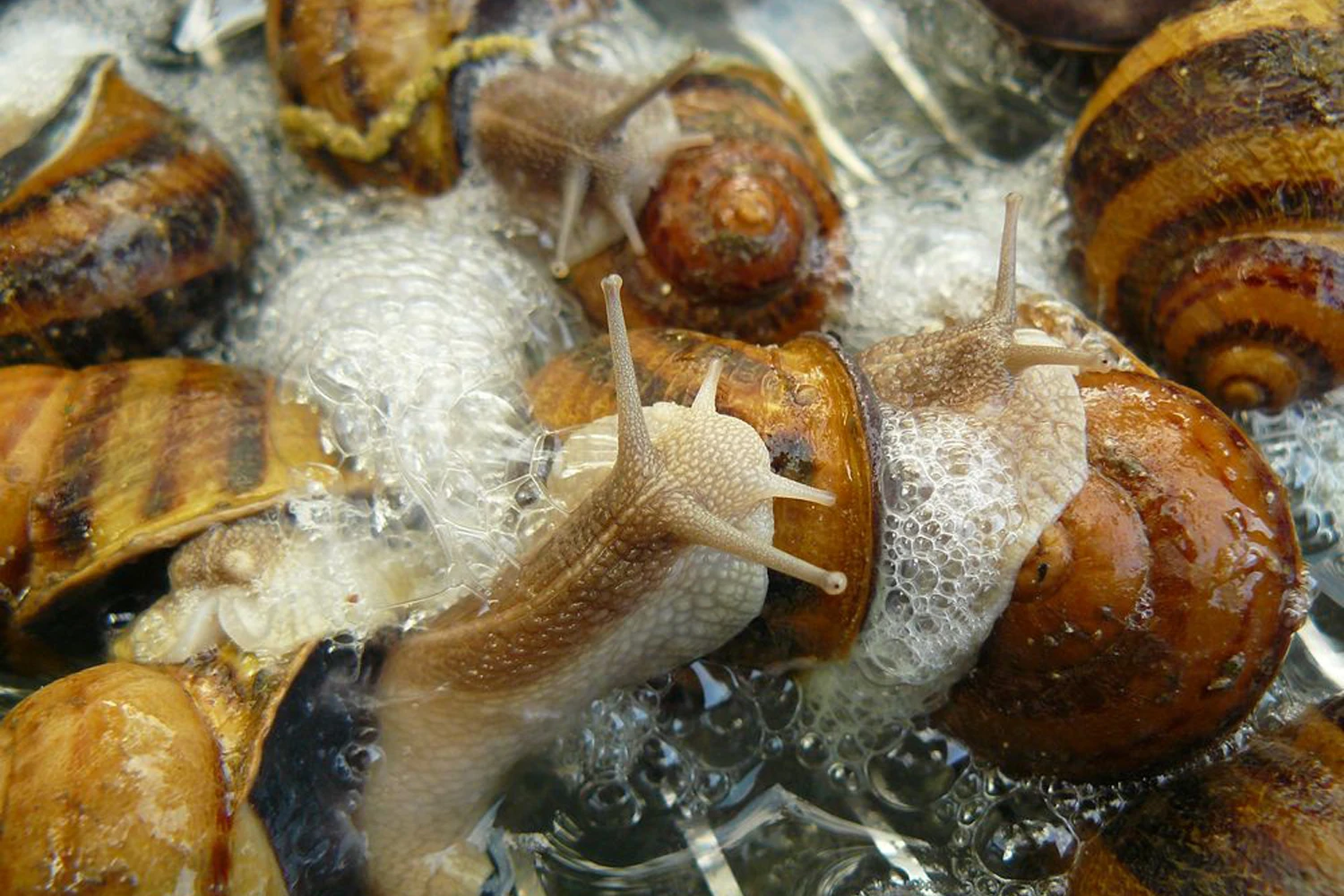
The future is gastropod: protein without the planetary price tag
Vienna’s Gugumuck Farm: free-range snails grown on kitchen scraps and herbs can out-perform chickens and pigs in feed efficiency and shrink agriculture’s footprint
Definition of Sustainable snail farming
Sustainable snail farming represents a progressive shift from traditional industrial practices, emphasizing ecological responsibility and resource efficiency. Sustainable farms prioritize the welfare of the snails, soil health, and biodiversity. Snails are fed on organic matter such as leaves, fruits, and vegetables, reducing the need for extensive land clearing and minimizing waste production. Intensive snail farms that may confine snails in artificial environments, use non-organic feed, often involve intensive land use, high water consumption, employ harmful extraction methods, especially those developed for the demand of snail mucin for the cosmetic industry.
Wiener Schnecken Manufaktur in Vienna: Andreas Gugumuck’s free-range sustainable snail farm sets a benchmark for eco-friendly escargot production
Since 2008, Andreas Gugumuck has revitalized the historic tradition of escargot production in Vienna, cultivating approximately 300,000 snails annually on his family farm in Rothneusiedl. His operation stands out for its commitment to sustainability: the snails are raised in free-range conditions, feeding on locally grown herbs and vegetables without the use of chemical fertilizers or pesticides. The farm’s infrastructure is constructed from eco-friendly materials, including wood and lime, and operates with a focus on minimizing ecological impact. His efforts have garnered attention from both local chefs and environmental advocates, positioning Vienna as a model for integrating sustainable agriculture into urban settings. His farm offers educational tours, tastings, culinary experiences and even beauty treatments involving snails.
Andreas Gugumuck: I had been searching for a way to revitalise our 300-year-old farm for a long time. I stumbled across a newspaper article about a top chef in 2008 and came across a mention of vineyard snails. What started as a joke about breeding snails then became serious. My grandparents’ main source of income was still the production of typical Viennese soup greens, i.e. carrots, parsnips, celery and similar crops. I grew up among vegetable crates, chickens, pigs and rabbits. I fondly recall my childhood in Rothneusiedl with love and affection. While growing up I had other interests though. I was an active part of the Viennese techno scene and eagerly produced tracks.
After attending HTL and completing my studies in business informatics at the Vienna University of Technology, I planned a career in the IT industry. The farm remained something of a romantic resource in the back of my mind: looking back, I was just waiting for the right opportunity to return to the analogue world. I booked my return ticket to Rothneusiedl after reading an interview with celebrity chef Christian Petz, then head chef at the Palais Coburg, about Viennese cuisine, in which Petz discussed Vienna’s snail tradition. The spark was ignited. I researched and rummaged through archives to give my vague plan some historical substance.
The tradition of snail farming and markets in Vienna
There were snail beer restaurants and many snail markets in Vienna. Snail farming dates back to ancient Romans, they brought snail farming to the new province of Carnuntum along with wine. Medieval monasteries took up this practice with great enthusiasm, as culinary variety was most welcome given the 160 days of fasting per year. Through my own research, I then came across the Viennese tradition of eating snails. In Baroque Vienna, snails were part of the food culture.
Anyone who could, bred snails as a sideline. There was a separate snail market in the area of today’s Petersplatz, where ‘snail women’ offered their wares for sale. In the Eighteenth century, people in Vienna still ate more snails than in Paris, it was a very popular dish and was enjoyed by all social classes. However, local production was not sufficient to satisfy Vienna’s appetite. Up to four million snails were imported each year.
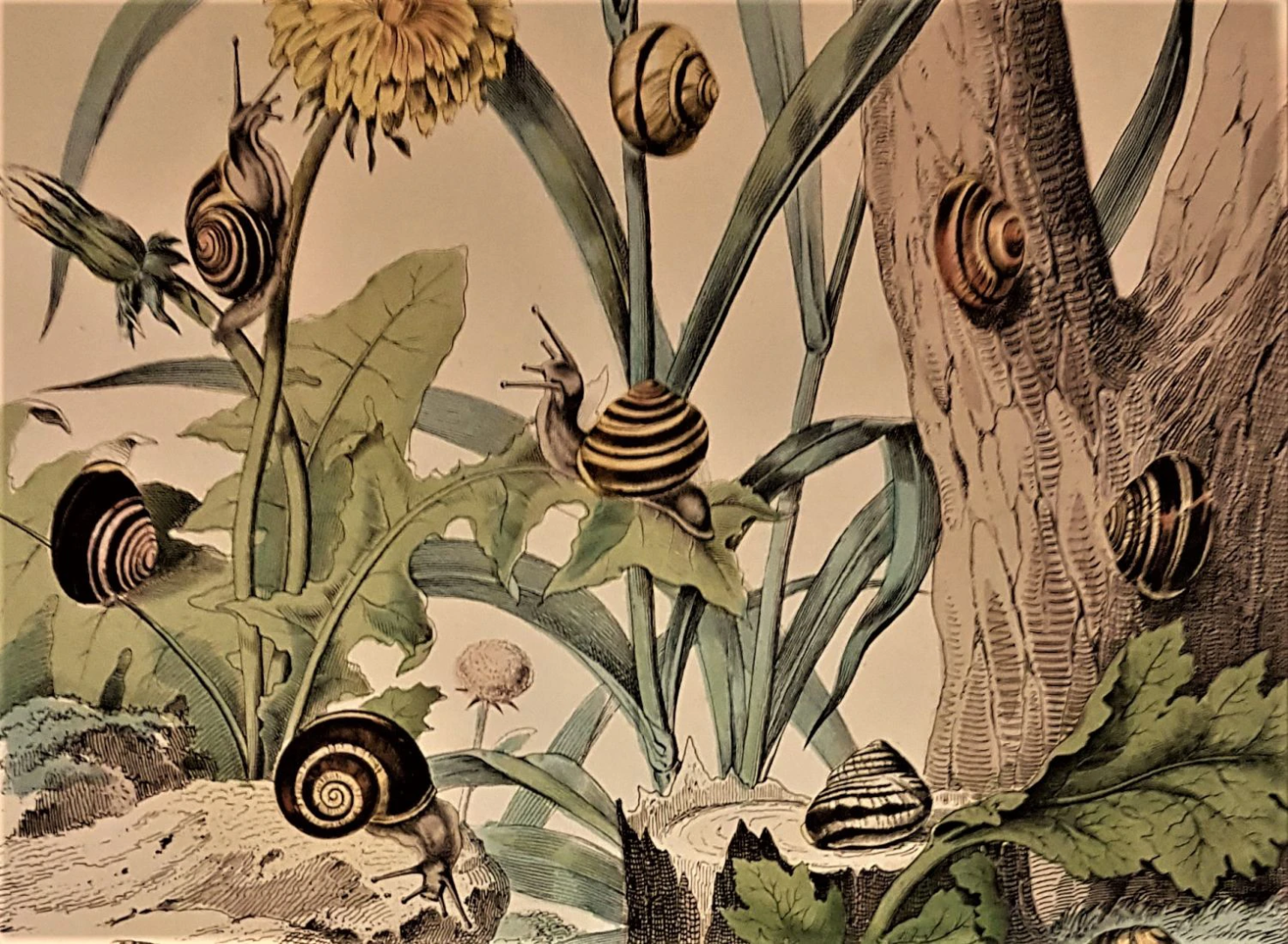
Vineyard Snails’ sense of smell: why olfaction research matters for efficient, low impact heliciculture
I am increasingly fascinated by their sense of smell. Time-lapse photography shows how quickly snails react to food. When snails start munching on chard leaves at dusk with their rough tongues, you can hear them in quiet moments. In any case, I’m happy to see that the snails here on my farm in the southern edge of Vienna lead a happy life: protected from predators, casually carrying their homes on their backs and surrounded by food.
With a good work-life balance, snails produce animal protein more efficiently than other agricultural creatures. As cold-blooded animals, snails convert a higher proportion of their food into muscle meat than mammals. Mammals have to invest part of their food in maintaining their body temperature..
Reviving escargot in modern Viennese cuisine
Since the tradition of eating snails had long been forgotten and quickly came to an end after the trend in the 1980s in German-speaking countries, generations have now grown up without snails and they are wrongly associated with tough meat or slime. When I first started breeding snails, I didn’t miss a single event where I could offer our snails. I started the farm in 2008 as a side business with 20,000 snails.
I grazed top-down through Vienna’s top gastronomy and walked through open doors. In 2010, I quit my IT job and planned my life around snail farming from then on. With perseverance and a passion for fair, high-quality food, I developed the farm in many small steps into a regenerative model farm for the future edible city of Rothneusiedl. Since 2010, I have also been organizing annual snail festivals in restaurants – it was a long struggle to re-establish snails as a delicacy in Austria.
Andreas Gugumuck in 2012 you won the European Young Farmer Prize, awarded by the European Congress of Young Farmers
The best young farmer award 2012 focused on alternatives in agriculture and encouraging young farmers to break new ground and invest more in processing. This year, in 2025, we have also been included in the Top 50 Farmers cohort to inspire others to take up regenerative agriculture. I personally harvest Helix pomatia and Helix aspersa maxima vineyard snails at around five months old and weighing 20 grams. Half of this is pure muscle meat. For me, they are not only part of Vienna’s culinary heritage, but also a ‘future food’ in the urban food system.
There is no more resource-efficient way to produce animal protein. The snails require little space, feed and water. The soil, air and environment are not polluted. There are many other advantages to snails: they provide valuable minerals, numerous vitamins, folic acid and omega-3 fatty acids.
Rethink what we value — or devalue — in nature
There is growing momentum for small-scale farming, circular economy and regenerative concepts such as Market Garden. As the project kept evolving, other pieces of the puzzle were added to the farm to implement a more and more complete awareness around snails and their surroundings: snail field tours, multi-course snail menus in the farm’s own bistro, mushroom cultivation, vegetable growing, a school on the farm, and a charming garden bar, where all these delicacies have been served since 2020.
There are now even plans for the development of a cosmetics line to improve the appearance of the skin using active ingredients in snail slime. I hope my project can raise a strong voice for regenerative agriculture.
Lorenzo Zerbini
